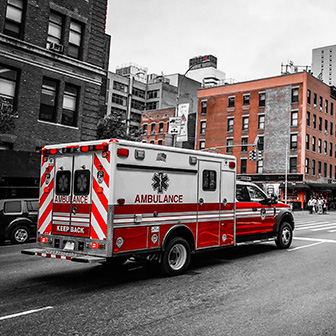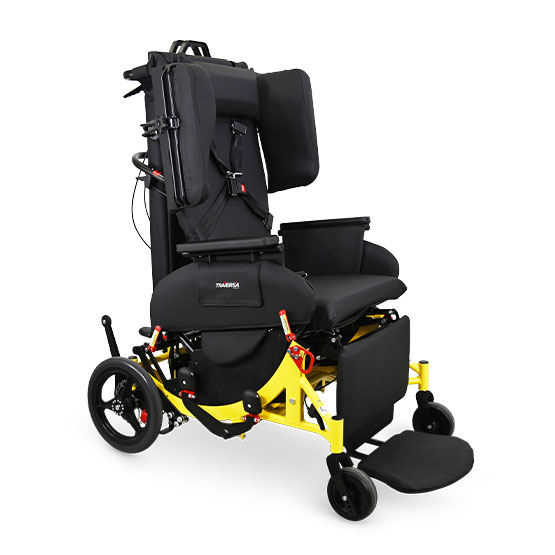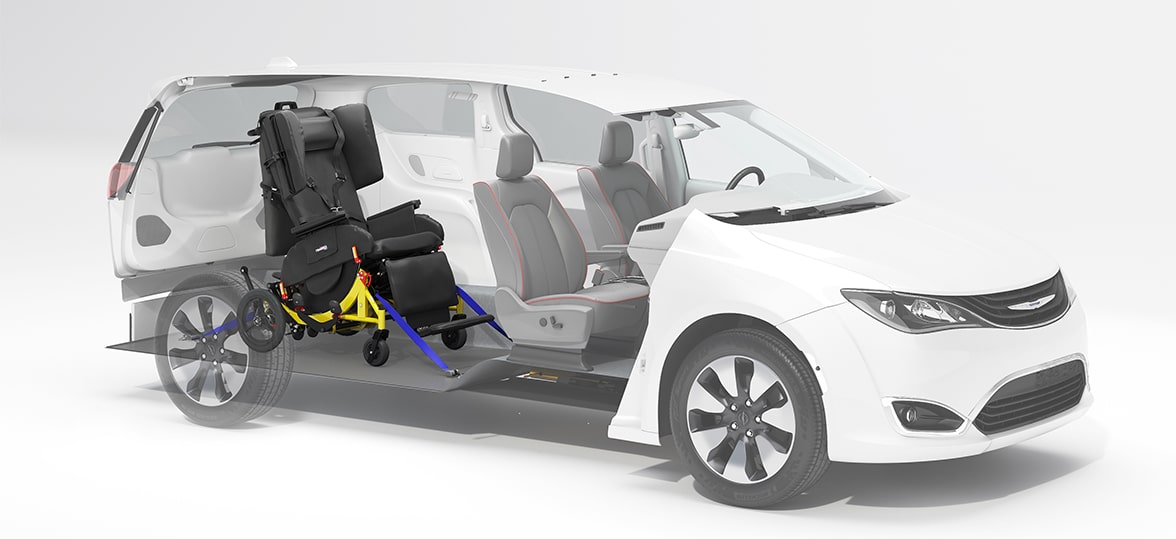Both ambulatory services and patient transport vehicle services play crucial roles in the healthcare industry. They provide patients with transportation that meets their medical needs at every level of severity and urgency.
Below, we discuss the difference between patient transport vehicle vs. ambulance services, their key features, regulations, and the patients they serve.
What Are Patient Transport Vehicles? (NEMT)
Patient transport vehicles, commonly known as non-emergency medical transportation (NEMT), are designed to transport patients who require a range of medical assistance but don’t need emergency medical care. NEMTs are vital for providing safe and comfortable access to healthcare for individuals with limited access to transportation.
Patients are often elderly who cannot drive, individuals living in remote areas, and those with disabilities or medical conditions that prevent them from driving themselves.
NEMT vehicles may be regular passenger vehicles, wheelchair-accessible vans, stretcher vans for those who need to lie down, shuttle buses for transporting groups of individuals, and minivans adapted to comfortably transport a small group of people.
NEMT services are ideal for patients who need reliable transportation for their:
- Primary care visits
- Specialist consultations
- Hospital discharges
- Follow-up appointments after surgery or hospital discharge
- Ongoing dialysis treatments
- Rehabilitation therapy appointments
- Dental and vision appointments
- And much more
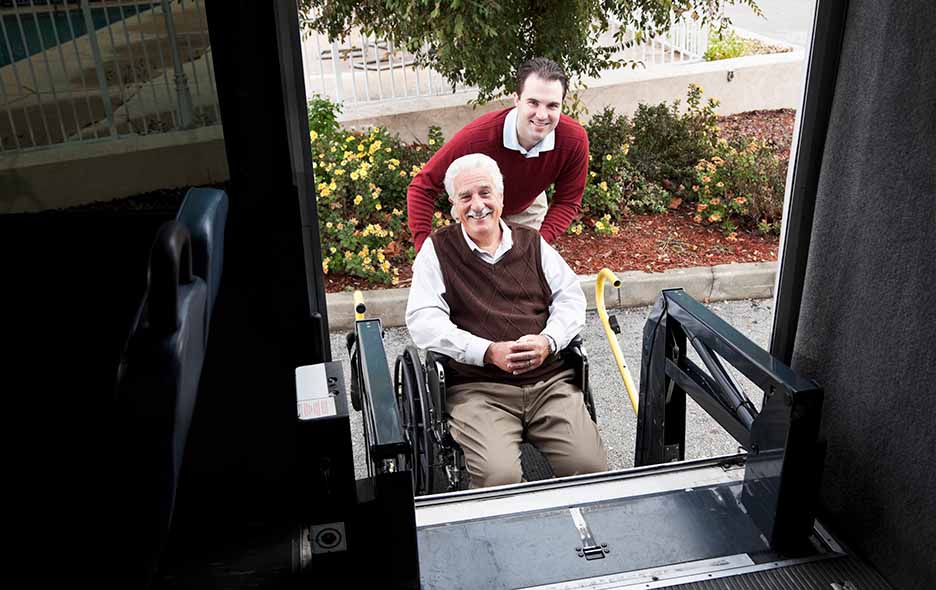
Key Features of an NEMT Vehicle
Non-Emergency Medical Transportation (NEMT) vehicles focus on safety, accessibility, comfort, and regulation compliance. These features ensure passengers with medical or mobility challenges can travel securely and comfortably to their destinations.
NEMT vehicles are typically equipped with wheelchair lifts and stretchers and spacious interiors for comfort during long-distance travel. They will have some combination of a wide entry door, a ramp, or a low step. These vehicles should also include properly-functioning climate control for general traveler comfort. They may also be equipped with specialized equipment such as oxygen tanks, gurneys, walkers, and IV poles.
What Are Ambulances?
When comparing patient transport vehicles vs. ambulances, the first thing to note about ambulatory services is the type of medical events they respond to. An ambulance is designed to transport patients who require immediate medical care, serving several critical functions for people suffering from a range of illnesses or injuries that call for urgent medical response.
Ambulances are equipped with medical equipment and staffed by trained emergency medical technicians (EMTs) who can provide immediate medical care during transport. They are typically designed as modified vans or trucks with specific features to support patient treatment and transportation.
Key Features of Ambulances
Ambulances are outfitted with emergency lighting and sirens to help their operators navigate a safe, clear path through traffic.
Ambulances are emergency response vehicles equipped with life-saving devices and staffed by trained emergency medical technicians (EMTs). They are designed to arrive first on the scene of accidents and medical emergencies to provide immediate treatment, stabilize patients, and transport them quickly to hospitals for continued emergency care.
Ambulances are equipped with life-saving medical equipment, including:
- Defibrillators
- Ventilators
- Oxygen supplies
- Suction units to clear airways
- ECG to track cardiac function
- Medical kits
They provide rapid response and immediate, critical care for everything from accidents to cardiac events and severe illnesses.
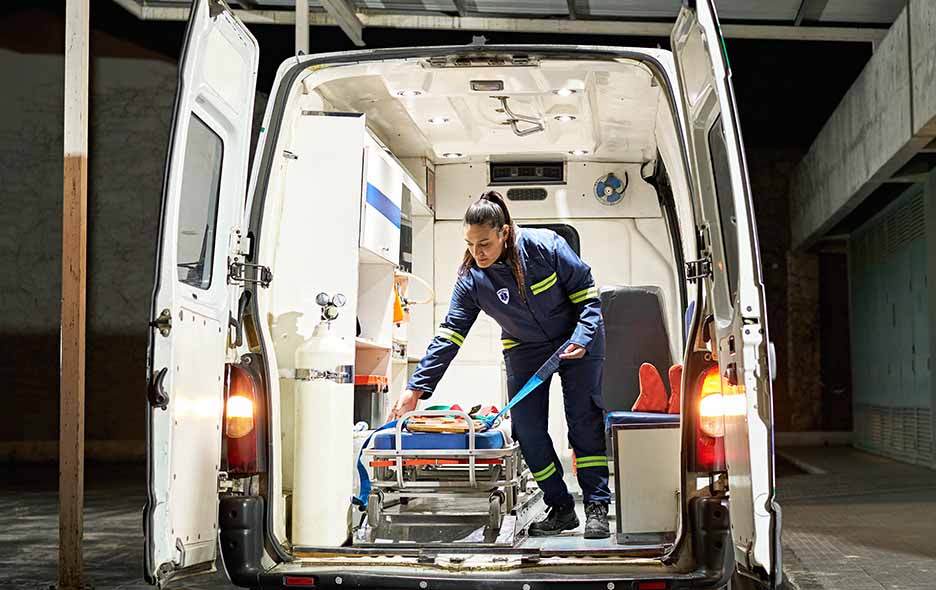
Key Differences Between Patient Transport Vehicles vs. Ambulances
The main difference between an emergency medical service (EMS) vs. NEMT is the purpose of transport.
Ambulances are designed for emergency medical situations that may require life-saving expertise on the scene and rapid transportation through traffic. They require advanced life support equipment (ALS) and staff trained to manage urgent health events.
Patient transport vehicles are designed for scheduled, non-urgent medical transport, providing access to medical care to those who cannot drive themselves or lack access to transportation.
These vehicles may be equipped with basic life support (BLS) equipment but are not designed to treat emergency health situations.
Ambulances typically have a more complex layout beyond space for a main stretcher and seating for medical personnel. They also include equipment securely mounted and easily accessible for emergency use in transit.
Patient transport vehicles are focused on accessibility, accommodating patients with mobility challenges. They aim to make it easy for patients using wheelchairs or stretchers to board and exit the vehicle.
Often, NEMT vehicles are designed either for wheelchair or stretcher access, and transport by stretcher requires two people for transport. For this reason, a unique, proprietary wheelchair design like Broda’s Traversa Wheelchair is revolutionary. In this case, a single NEMT operator and vehicle can provide transportation for a wheelchair patient or someone who would otherwise require a stretcher because it is fully adjustable to virtually any required position.
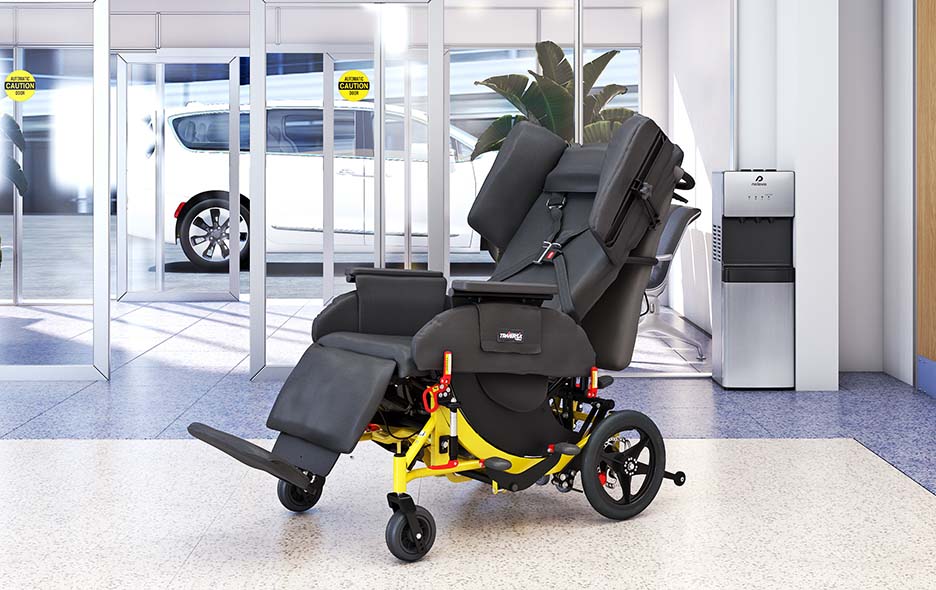
Cost Differences between Ambulances and Patient Transport Vehicles
Ambulances have a high operating cost due to their onboard medical equipment and medically trained staff. Patient transport vehicles have lower operating costs than ambulances because they typically are not equipped with as advanced or extensive medical equipment, and staff usually aren’t required to have as extensive medical training.
Ambulance transportation can be extremely costly for patients, though the actual cost can vary significantly from one city to the next. Most patient health insurance plans cover the cost of ambulance rides but may only account for a percentage when factoring in the plan’s copay and deductible values.
Patient transport services are significantly more affordable than ambulance transportation and are typically covered by patient insurance. These services are affordable enough that many individuals can pay out-of-pocket if necessary.
Licensing and Certification
There are significantly higher licensing and certification requirements for ambulance drivers than patient transport vehicle drivers.
Ambulance Staff
Ambulances require highly-trained personnel to provide emergency medical care. The two main levels of certification for ambulance staff are Emergency Medical Technicians (EMTs) and Paramedics.
EMTs require over 100 hours of training over 6 months, including a range of medical care skills from CPR to basic life support. They must pass the National Registry of Emergency Medical Technicians (NREMT) cognitive and psychomotor exams.
Paramedics require 1–2 years of training, well over 1,000 hours. They must complete a Commission on Accreditation of Allied Health Education-accredited (CAAHEP) program or similar program and then pass the National Registry Paramedic Certification Examination.
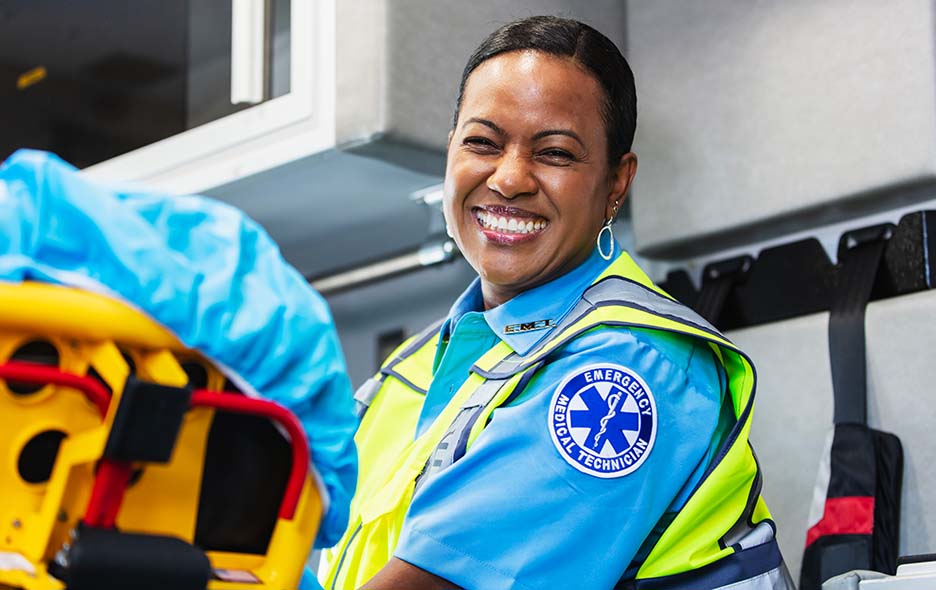
Patient Transport Vehicle Staff
There are no standardized national certifications for non-emergency medical transportation providers, but they do require the following:
- Business license
- Driver’s license
- Passenger Assistant Safety Sensitivity (PASS) Certification (often required by Medicaid and brokers)
- Background check
- Drug screening
- Driver health certification
- Vehicle liability insurance
- National Provider Identifier (NPI) for contracting with NEMT brokers
Regulations
Ambulances have to meet federal and state oversight. Federal regulations are guided by The Centers for Medicare & Medicaid Services (CMS), through the Code of Federal Regulations (CFR), specifies their design for emergency response, the use of warning lights, sirens, and other equipment, along with medical training for staff.
State regulations differ from one state to the next but may provide specifications like insurance requirements or unique additional safety requirements not specified at the federal level.
Regulations for patient transport vehicle services focus on accessibility, safety, and quality of care, with guidance from the CMS. States must provide NEMT services as part of their agreement with the Medicaid program, and CFR NEMT Prepaid Ambulatory Health Plans (PAHPs) are required to enroll with the state. NEMT drivers must meet minimum requirements like driver license proof and drug testing.
State regulations for NEMTs vary from state to state but generally cover specific safety and driver requirements.

Key Patient Transport Requirements for NEMT Providers
To provide safe and reliable non-emergency medical transportation (NEMT) services, providers must ensure their vehicles and operations meet certain requirements. These include ensuring vehicle accessibility for patients with mobility challenges, having the necessary safety equipment, and following regulations set by health authorities and state guidelines.
NEMT vehicles should be equipped with wheelchair lifts, ramps, or stretcher accommodations, and drivers should complete essential training, such as PASS (Passenger Assistant Safety Sensitivity) certifications, background checks, and drug screening. Maintaining compliance with these standards helps ensure that patients are transported securely and comfortably while meeting regulatory requirements.
Equip Your NEMT Vehicles with the Best
The Traversa Transport Wheelchair allows your NEMT service to provide wheelchair and stretcher transportation from the same vehicle, requiring operation by only one operator. The Traversa brings maneuverability, durability, and comfort to your business and positions you to build repeat business with happy customers.
Get in touch with us about the one-of-a-kind Traversa today!

